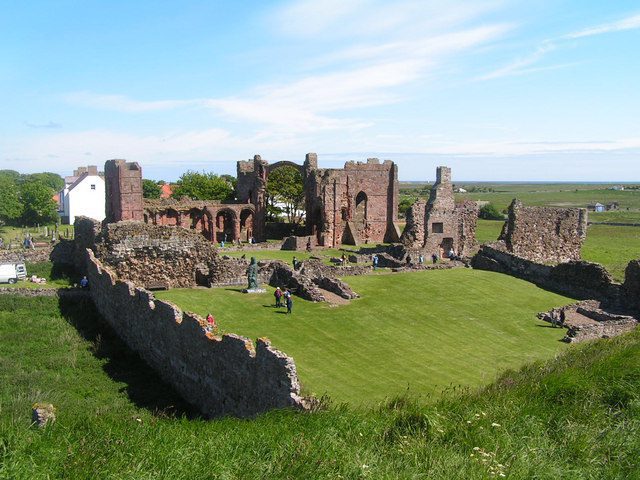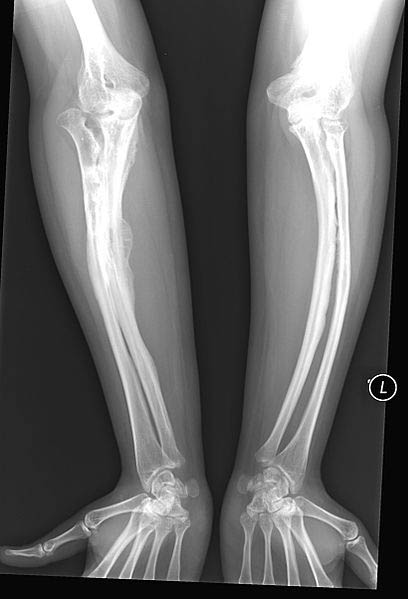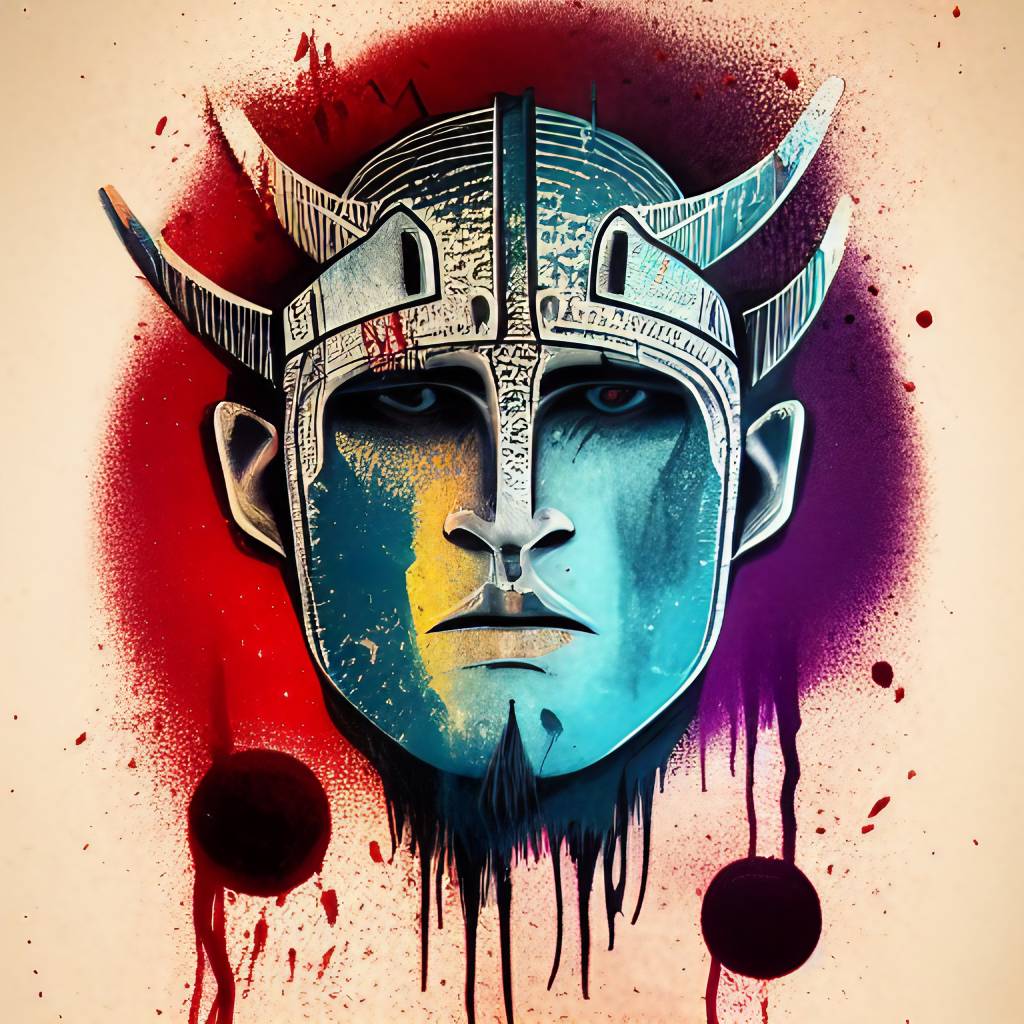Alex Andersen’s memorable portrayal of Ivar the Boneless in the History Channel show Vikings brought a fascinating, semi-historical character from medieval literature to life for the modern era. Like most of the show, the figure of the bold fighter who couldn’t walk is drawn from the Norse sagas, written by Icelanders in the 1100s and 1200s.
Composed well after the Viking Age had ended, the sagas look back romantically on what was already a lost way of life—by then, the Norse had stopped raiding, settled down, and abandoned Odin and Thor for Christianity. The Icelanders’ colorful heroes and monsters have inspired modern writers like JRR Tolkien, Roald Dahl, and Neil Gaiman. And—though they took significant poetic license—they were apparently based on an oral tradition that sprung from genuine events.
In Ivar the Boneless’ case, he’s often thought to be based on “the tyrant Ingvar” who the English sources record as leading the “Great Heathen Army” into England, and who presumably —for obvious medical reasons—had bones. To understand this figure, then, we need to explore not just one Ivar, but two.
Ivar Ragnarsson the legend
Also known as Ivar Ragnarsson, the Ivar of Norse legend appears most prominently in the Saga of Ragnar Lothbrok. In the tale, Ragnar—the main character in Vikings the show—marries a seer called Aslaug. She foresees that they must wait three nights before consummating their marriage, or their child will suffer malign consequences. Ragnar either wasn’t superstitious, or was just—how I can put this—extremely horny: either way, he “disregarded her advice.” Sure enough, a boy was born with no bones, who they named Ivar.
Ragnar and Aslaug had four more sons, and the lads grew up to be a kind of Viking Famous Five, scampering around Europe and getting into all kinds of scrapes. Despite his bonelessness, Ivar turns out to be handsome and wise, and gets by with his brothers carrying him around on poles. Indeed, Ivar is something of a leader. He never wants an easy raid to get morale up: he’s always urging them on to greater challenges and glory.
Meanwhile, the boys’ father gets jealous of his sons’ achievements and decides to invade England to make a point. Unfortunately, he’s captured by the local king, Aella, who throws him into a pit of vipers. When the boys find out, they are, naturally, fuming. A further invasion of England ensues, and needless to say, Aella meets a very bloody end.
I’d recommend reading some of the sagas: among other things, you’ll find out about Ivar’s victory over an enchanted cow. The plotlines are a little kooky, but the characters are not 2D, and mostly it’s just pretty cool to read stories that kept people warm around a fireplace almost a millennium ago.
But where do these tales come from? Well, we know that there was a real invasion of England by an Ivar and brothers, and a real King Aella. Could these be the true events lying behind the saga?
The real Ivar the Boneless
The sources we have from the time are not Norse but English and Irish. To understand the English ones, we need to know that there was, in fact, no ‘England’ at the time. Angles and Saxons had arrived from the Continent several centuries earlier and displaced the culture of the local Celts. But they formed many separate kingdoms, which would only slowly consolidate into ‘Angle-land’ or ‘England.’ By the Vikings’ time, there were four: East Anglia (the east), Northumbria (north), Mercia (Midlands), and Wessex (south).

In the late 700s, an event with a magnitude akin to 9/11 shocked Britain as the Norse sacked the monastery of Lindisfarne. The Viking Age was underway. The mid-800s sees the Anglo-Saxon Chronicle recording the ominous arrival of a “Great Heathen Army” in East Anglia, with an Ivar and brothers at the fore. The East Anglians chose to hand the muggers their phone and wallet, and allowed them passage northwards. There they confronted Northumbria—home of the real King Aella. A slaughter ensued, Aella was killed, and the Norsemen occupied York.

The Heathen Army would rampage around England for years. Our next mention of Ivar the Boneless sees him back in East Anglia, killing their King Edmund. A medieval French abbot’s later dramatic re-telling of the story has Edmund refusing to deny Christ before the pagans. Ivar cut his head off and threw it in the brambles, leaving his body in the open. His head and body were later reunited and buried at what became a pilgrimage site, in the town now known as Bury St Edmunds.
The invasion was a watershed in English history—the first time Vikings came not just to raid but to stay. Eventually, King Alfred of Wessex led the fightback, beating the Norse in the field and striking a deal that divided England between Anglo-Saxon and Norse regions (the latter area becoming known as the Danelaw). By then, Ivar was gone. But Scandinavians would hold land in England for the next 200 years, leaving some 600 words of Norse origin in the English language (including they, give, egg, knife, anger, freckles, and dirt).
The death of Ivar
Over in Ireland, however, Scandinavians had already established port bases, including a settlement that would become Dublin. The Irish annals record a man named ‘Imhar’ (‘mh’ is pronounced ‘v’ in Irish and Scottish Gaelic). He was something of a big cheese in Dublin, described as “Lord of the Dark Foreigners” (the Irish divided the Norse into ‘light’ and ‘dark’ foreigners, which may have reflected a difference between Norwegians and Danes).
Funnily enough, Imhar disappears from the Irish records in the years 866-70—exactly the years Ivar the Boneless turns up in England, leading many historians to suspect he’s the same guy. If so, after his exploits in England, he returned to Ireland via a brutal siege of Dumbarton, Scotland. Imhar died a couple of years later of a “sudden and horrible disease”—the Irish annalist then adds, “So it pleased God.” His descendants, though, would become a significant family, holding land in Ireland and Scotland, eventually learning Gaelic and blending in among the Irish and Scots.
Why was Ivar nicknamed ‘Boneless’
Now, I know what you’re thinking. What about the ‘no bones’ thing? If the son of Ragnar and Aslaug is really based on the leader of the Heathen Army, why did the Icelanders record him as boneless? Well, it’s been speculated that the ‘boneless’ nickname was attached to Ivar as a result of a genetic condition like osteogenesis imperfecta (‘brittle bone disease’), which would have caused difficulty walking. Centuries later, the saga writers, working from oral stories, might have invented the parable of Ragnar’s impatience to explain it. This was the idea behind Neil Shaban’s 2003 documentary ‘The Strangest Viking.’

Neither the English nor Irish sources say anything about Ivar struggling to walk. You might think they’d mention it in such a prominent fighter—but the Anglo-Saxon Chronicle, in particular, is famously pithy, with only a few words sometimes describing events of titanic importance.
There are other possibilities. Perhaps, rather than describing a condition, it’s a positive nickname? While “boneless” doesn’t exactly sound very threatening, is it a kind of sarcasm to describe a huge man—a tongue-in-cheek Viking joke?
Or maybe it refers to flexibility? I particularly like one theory that suggests the moniker is the imagery of being a snake. While calling someone a “snake” sounds very negative to us, in the pre-Christian world of the Norse, snakes wouldn’t have had the symbolism of treachery we inherit from the Garden of Eden story—rather, it may have suggested being agile and lethal.
If so, the Icelanders might have heard the oral tales of “Ivar the Boneless” and interpreted them over-literally, recording Ivar as being really unable to walk.
Then again, maybe those wily storytellers just made it up. With no way to settle it conclusively, it looks like this aspect of Ivar will remain shrouded in mystery.
Ivar the TV star
The crazed, bright blue-eyed schemer depicted by Alex Andersen in Vikings is, in many ways, a third interpretation of Ivar the Boneless for modern times. In the show, the character is seen, among other things, rampaging across Russia. That’s somewhere the Norse certainly went, but not the real Ivar.
Vikings combines many events across centuries, attributing them to a few main characters to create a compelling narrative. Funnily enough, though, that’s exactly what the Icelandic sagas did. It’s a proud tradition of re-imagining the Vikings: these people who shaped Europe as they made it shake—maybe, in one case, despite having no bones.


